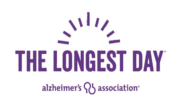The following is a link to report infographics and fact sheets.
CHARLOTTE, N.C. – A new survey of primary care physicians appearing in the Alzheimer’s Association 2020 Alzheimer’s Disease Facts and Figures report finds 9 in 10 primary care physicians (87%) expect to see an increase in people living with dementia during the next five years, but half (50%) say the medical profession is not prepared to meet this demand. The new report estimates there are currently more than 5 million Americans 65+ living with Alzheimer’s – a number expected to nearly triple by 2050.
The 2020 Facts and Figures report provides and in-depth look at the latest national and state-specific statistics on Alzheimer’s prevalence, incidence, mortality, costs and impact on caregivers. New disease-related statistics for North Carolina revealed the following:
- Number of North Carolina residents aged 65 and older living with Alzheimer’s: 180,000
- Estimated number of North Carolina residents living with Alzheimer’s in 2025: 210,000
- Percentage change: 16.7% increase
- Statewide deaths from Alzheimer’s disease (2018): 4,495
- Number of North Carolina residents serving as unpaid family caregivers: 479,000
- Total hours of unpaid care provided: 545 million hours
- Total value of unpaid care: $7.15 billion
“The new Facts and Figures report shows that Alzheimer’s disease and other dementias continue to be a significant burden for too many North Carolina families,” said Katherine L. Lambert, CEO of the Western Carolina Chapter. “We must continue to work aggressively to advance new treatments that can stop or slow the progression of Alzheimer’s, while also continuing to provide care and support services to help all those affected.”
In addition to new state disease-related data, for the first time, the Facts and Figures accompanying special report, “On the Front Lines: Primary Care Physicians and Alzheimer’s Care in America,” examines the experiences, exposure, training and attitudes related to dementia care among primary care physicians (PCPs), recent medical school graduates, and recent residency program graduates, now in primary care practice.
The report found that 82% PCPs say they are on the front lines of providing dementia care, but not all are confident in their care for patients with Alzheimer’s and other dementias.
- Nearly 2 in 5 (39%) report they are “never” or only “sometimes comfortable” making a diagnosis of Alzheimer’s or other dementias.
- Nearly one-third (27%) report they are “never” or only “sometimes comfortable” answering patient questions about Alzheimer’s or other dementias.
- 22% of all PCPs had no residency training in dementia diagnosis and care. Of the 78% who did undergo training, 65% reported that the amount was “very little.”
Ensuring PCPs are adequately prepared to deliver dementia care is critically important given a shortage of dementia care specialists. A state-by-state analysis in the report examines the number of geriatricians needed to meet future care needs of seniors living with dementia in 2050. It revealed severe shortages in several states, with 14 states needing to increase the number of practicing geriatricians at least five-fold to meet the projected care needs of people living with dementia in 2050.
In 2019, there were 159 practicing geriatricians in North Carolina, according to the report. It is estimated that 535 are needed to meet the meet the future dementia care needs of North Carolina seniors in 2050 – a 1,606% increase.
While one-third of PCPs (32%) say they refer dementia patients to specialists at least once a month, more than half (55%) say there are not enough dementia care specialists in their area to meet patient demand, a problem more common in rural areas. According to the report, 44% of PCPs practicing in large cities and 54% in suburbs reported there are not enough specialists in their area, while 63% practicing in small cities or towns and 71% in rural areas noted this challenge.
“With the number of North Carolina residents living with Alzheimer’s and other dementias increasing, it’s critically important that we take steps to ensure primary care physicians and other providers across the state are fully prepared to meet current and future dementia care needs,” said Lambert. “The Alzheimer’s Association in North Carolina is committed to helping primary care physicians and all who provide care to the 180,000 North Carolina residents living with Alzheimer’s and other dementias.”
PCPs participating in the survey report that 4 in 10 of their current patients are age 65 and older, and, on average, 13% of those patients have been diagnosed with dementia. The majority of PCPs (53%) say they are answering questions related to Alzheimer’s or other dementias every few days or more. More than 9 in 10 PCPs (92%) believe patients and caregivers expect them to know the latest thinking and best practices around dementia care.
The Facts and Figures report reveals nearly all PCPs (99%) say it is important to stay current on new developments in diagnosis and care for Alzheimer’s and other dementias. Areas cited as most important by PCPs include: management and treatment (83%), screening and testing (69%), diagnosis (64%), prevention (49%), family support (49%), managing dementia alongside other conditions (46%) and signs and symptoms (44%).
# # #
Additional data from the report is included below. Full text of the 2020 Alzheimer’s Disease Facts and Figures report, including the accompanying special report, “On the Front Lines: Primary Care Physicians and Alzheimer’s Care in America,” can be viewed alz.org/facts. The report will also appear in the March 2020 issue of Alzheimer’s & Dementia: The Journal of the Alzheimer’s Association (volume 16, issue 3). For multimedia support of this year’s report, click here.
At a Glance: 2020 Alzheimer’s Disease Facts and Figures
Primary Care Physicians in their practice
- 92% say patients and caregivers expect them to know the latest thinking and best practices around dementia diagnosis and care.
- 82% of PCPs feel they are on the front lines of providing critical elements of dementia care to patients.
- 53% are fielding questions related to Alzheimer’s or other dementias from older patients every few days.
Challenges in meeting future demand
- 87% expect an increase in patients with Alzheimer’s or other dementias during the next five years.
- 50% of PCPs believe the medical profession is not ready to care for the growing number of people with Alzheimer’s or other dementias.
- 89% feel they are staying current on medical developments, but of those, 42% admit it’s “only a little.”
- 51% feel there are not enough options for continuing education and training.
- 55% report there are not enough specialists in their area to meet patient need.
Medical training for future care
- 92% agree that dementia care is a rapidly evolving area of medicine that requires ongoing learning and training.
- 78% agree medical school and residency can never adequately prepare a physician for the realities of Alzheimer’s and dementia care.
Updated Alzheimer’s Statistics
The Alzheimer’s Association Facts and Figures report also provides an annual look at the latest national statistics and information on Alzheimer’s prevalence, incidence, mortality and morbidity, costs of care and caregiving, both nationally and state-by-state.
Prevalence, Incidence and Mortality
- More than 5 million Americans age 65 and older are living with Alzheimer’s dementia in 2020. Eighty percent are age 75 or older.
- Two-thirds of Americans over age 65 with Alzheimer’s dementia (3.6 million) are women.
- Alzheimer’s is the sixth-leading cause of death in the U.S., and the fifth-leading cause of death for those ages 65 and older.
- As the population of the U.S. ages, Alzheimer’s is becoming a more common cause of death.
Cost of Care
- Total payments in 2020 for all individuals with Alzheimer’s or other dementias are estimated at $305 billion (not including unpaid caregiving). Medicare and Medicaid are expected to cover $206 billion or 67% of the total health care and long-term care payments for people with Alzheimer’s or other dementias. Out-of-pocket spending is expected to be $66 billion.
- Total payments for health care, long-term care and hospice care for people with Alzheimer’s and other dementias are projected to increase to more than $1.1 trillion in 2050 (in 2020 dollars).
- The total lifetime cost of care for someone with dementia was estimated at $357,297 (in 2019 dollars).
Caregiving
- In 2019, caregivers of people with Alzheimer’s or other dementias provided an estimated 18.6 billion hours of unpaid care, a contribution to the nation valued at $244 billion.
- Nearly half of all caregivers (48%) who provide help to older adults do so for someone with Alzheimer’s or another dementia.
- Approximately two-thirds of caregivers are women, and one-third of dementia caregivers are daughters.
- Forty-one percent of caregivers have a household income of $50,000 or less.
About 2020 Alzheimer’s Disease Facts and Figures
TheAlzheimer’s Association 2020 Alzheimer’s Disease Facts and Figures report is a comprehensive compilation of national statistics and information on Alzheimer’s disease and related dementias. The report conveys the impact of Alzheimer’s on individuals, families, government and the nation’s health care system. Since its 2007 inaugural release, the report has become the preeminent source covering the broad spectrum of Alzheimer’s issues. The Facts and Figures report is an official publication of the Alzheimer’s Association.
About the Survey
Versta Research conducted surveys on behalf of the Alzheimer’s Association about medical training and physician attitudes regarding diagnosis and care of patients with Alzheimer’s and other dementias. Surveys were conducted during December 2019. Sample size was 1,000 primary care physicians, 200 recent primary care medical residents, and 202 recent medical school graduates. To qualify for the survey, physicians had to have been in practice for at least two years, and spend at least 50% of their time in direct patient care, with at least 10% of their patients being age 65 or older. For complete details regarding survey methodology, see page 66 of the report.
About the Alzheimer’s Association:
The Alzheimer’s Association is the leading voluntary health organization in Alzheimer’s care, support and research. Our mission is to eliminate Alzheimer’s disease through the advancement of research; to provide and enhance care and support for all affected; and to reduce the risk of dementia through the promotion of brain health. Our vision is a world without Alzheimer’s.
About the Alzheimer’s Association – Western Carolina Chapter:
The Western Carolina Chapter provides patient and family services, information and referral, education, and advocacy in 49 central and western North Carolina counties. We provide a variety of services including a 24/7 Helpline, support groups, educational programs, and MedicAlert®. We offer opportunities to get involved and to make a difference. For more information about Alzheimer’s disease or the Alzheimer’s Association Western Carolina Chapter, visit www.alz.org/northcarolina or call (800) 272-3900. For the latest news and updates, follow us on Facebook, Twitter and Instagram.











